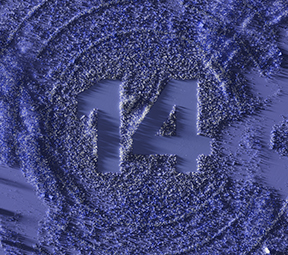
Although such editing can be an exceptionally powerful tool, successful manipulation of Core Cells with predictable results requires in-depth knowledge of algorithmic implementation of signal generation and processing.

Implementation of Core Technology with version 5 enables user to view and edit the structure of any "Core Module" building block. The objects that are available within Reaktor range from simple math operators to large sound modules. Each of the Reaktor modules is defined by its inner workings, and expansion thereof to the users' specification comes with relative ease.

Many factory-shipped objects within Reaktor can be accessed and edited, and new objects can be generated on the fly. The patcher window allows one to navigate the inner structure of user's models. The modules are categorized into particular hierarchy to aid clarity in patching. The building blocks used give Reaktor users freedom of choice to help shape their sound design. Its patches consist of modules, connected by lines to provide a visual interpretation of signal flow. Functionality įrom the end-user standpoint, Reaktor is a sound creation/manipulation tool with a modular interface. A new "Blocks" feature allowed for the development of rackmount style modular "patches" for creating synthesizers and effects. It features many new improvements for advanced programmers. Reaktor 6.0 was released on September 9, 2015. It features a revised interface as well as other changes. The release of Reaktor 5.5 was announced for 1 September 2010. Also a number of bug fixes were implemented. Reaktor 5.1, released on 22 December 2005, and presented as a Christmas present, features new Core Cell modules, and a new series of FX and ensembles. Core Technology initially confused a lot of instrument designers because of its complexity, but is now steadily making its way into new instruments and ensembles. His contributions, along with those of Reaktor Core developer Martijn Zwartjes, were released within Reaktor 5 in April 2005.

Zavalishin ceased the development of his software, yet integrated a deeper DSP-level operation within Reaktor, known as Reaktor Core Technology.
MAIN REAKTOR SOFTWARE
In 2003 Native Instruments hired Vadim Zavalishin, developer of the Sync Modular software package. It shipped almost six months behind schedule. Reaktor 4 was a major enhancement in terms of stability, instrument library, GUI, and VSTi ease-of-use in external sequencers.
MAIN REAKTOR FULL
Reaktor 3.5 is the first release that features full cross-platform compatibility. The earliest version to really resemble the modern incarnation of the software is version 3.5, which improved greatly in VST performance and sample handling. Further expansion of synthesis and sampling modules, addition of new control-based modules (XY control) and data management (event tables) greatly expands the abilities of the program. With version 3.0 (released in 2001), Native Instruments introduced a redesigned audio engine and new graphic design. Plug-in support for VST, VSTi, Direct Connect, MOTU, and DirectX formats is integrated by 2000 (software version 2.3). Integrated real-time display of filters and envelopes and granular synthesis are among most notable features. Generator/Transformator) was released for Windows and Macintosh.
MAIN REAKTOR DRIVERS
By 1998, Native Instruments redesigned the program to include new hierarchy, and integrated third-party drivers for use with any standard Windows sound card.

MAIN REAKTOR GENERATOR
In 1996, Native Instruments released Generator version 0.96 - a modular synthesizer for PC, requiring a proprietary audio card for low-latency operation.


 0 kommentar(er)
0 kommentar(er)
